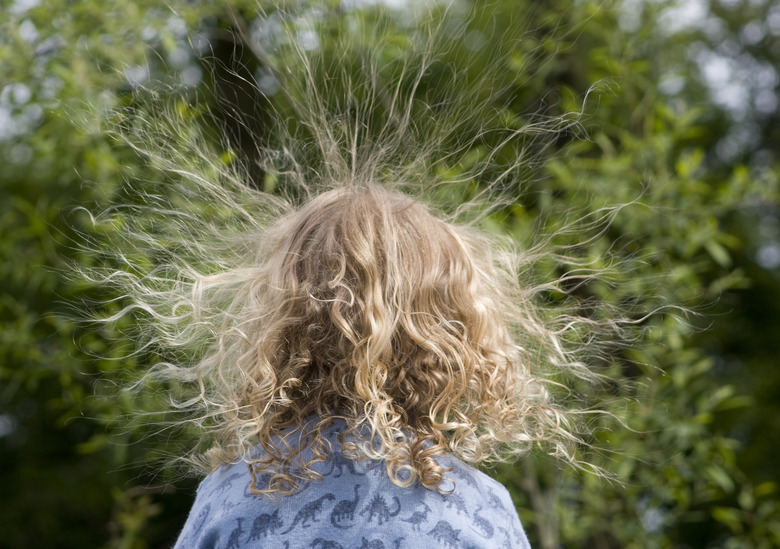How To Build Up Static Electricity With Your Hands
As far back as 600 B.C., people knew that rubbing fur on different objects gives those objects electrical charges. Modern scientists understand that electron transfer between objects produces static electricity — that mystical "shocking" force that may have jolted you when you touched metal on a winter's day.
The amount of charge generated by rubbing depends on environmental conditions. Static electricity is more noticeable in dry conditions, because the water in humid air helps diffuse the charge– the water in the air condenses into a tiny layer on the surface that conducts the charge and spreads those electrons around so they are less likely to gather into a buildup that will discharge and shock you!
People often think that cold conditions cause static buildup, but this is just coincidence– on cold days, the air is generally drier, and it's the dryness that facilitates static electricity buildup.
Generate a Charge By Rubbing
Step 1
Place the plastic wrap on a table and rub it for a few seconds using the fur. As you rub, press firmly to smooth the wrap so that it flattens on the table.
Step 2
Lift one end of the wrap. Note how the table attracts it because of the wrap's electrical charge.
Step 3
Lift the wrap further away from the table and observe how it clings to your arm. This occurs because the rubbing transferred electrons between the fur and the wrap, giving it an electrical charge. The table and your arm are not charged, but they attract the wrap because they are charged relative to each other– the neutral objects are less negative, and therefore more positive, than the negatively charged object– if the difference is great enough, they will attract and the objects will stick.
Electrical Fun with Balloons
Step 1
Blow up a balloon and tie off the end.
Step 2
Grip the tied end of the balloon firmly and rub one side of it on a piece off wool. Do not rub back and forth — instead, rub in one direction.
Step 3
Hold the balloon against a wall and note what happens. The rubbing action creates a charge on the part of the balloon that touched the wool. If sufficient charge accumulates at that point, the balloon sticks to the wall. If the balloon did not stick, touch it to a piece of metal to remove the charge, then repeat the experiment. This time, rub the balloon for a little longer. Repeat the experiment until the balloon gains enough charge to remain on the wall.
Things Needed
- Fur material
- Plastic wrap
- Balloon
- Wool
TL;DR (Too Long; Didn't Read)
As an optional experimental observation, use a stopwatch to determine how long your balloon sticks to the wall. You can even perform multiple tests where you rub a balloon for different lengths of time and record how long it takes for it to fall.
Warning
Be careful when performing static electricity experiments near flammable sources, to reduce the risk of fire.
Cite This Article
MLA
Lee, Kevin. "How To Build Up Static Electricity With Your Hands" sciencing.com, https://www.sciencing.com/build-up-static-electricity-hands-8496333/. 30 April 2018.
APA
Lee, Kevin. (2018, April 30). How To Build Up Static Electricity With Your Hands. sciencing.com. Retrieved from https://www.sciencing.com/build-up-static-electricity-hands-8496333/
Chicago
Lee, Kevin. How To Build Up Static Electricity With Your Hands last modified March 24, 2022. https://www.sciencing.com/build-up-static-electricity-hands-8496333/
